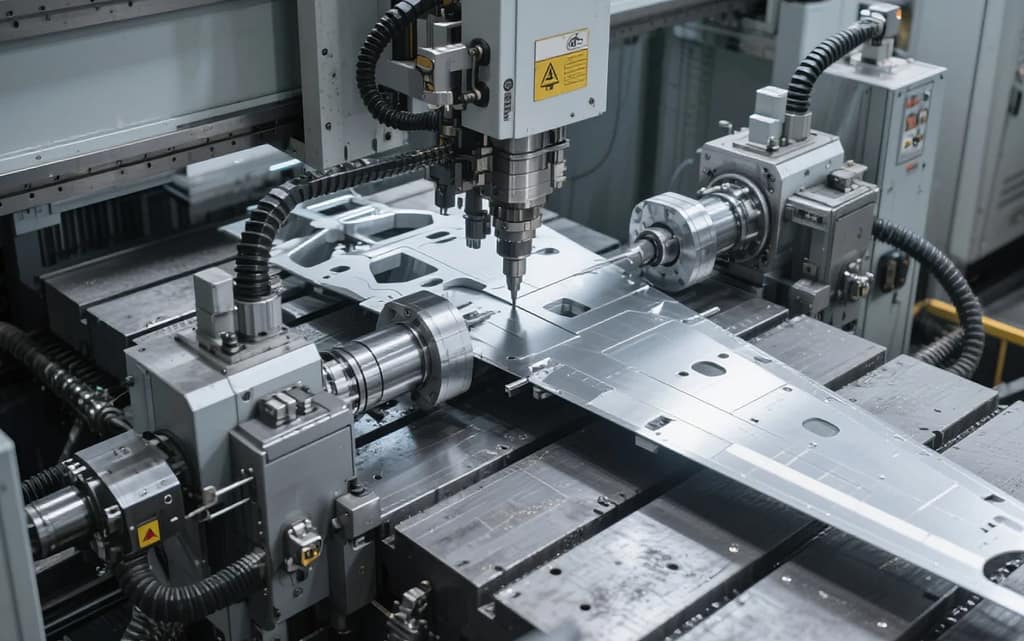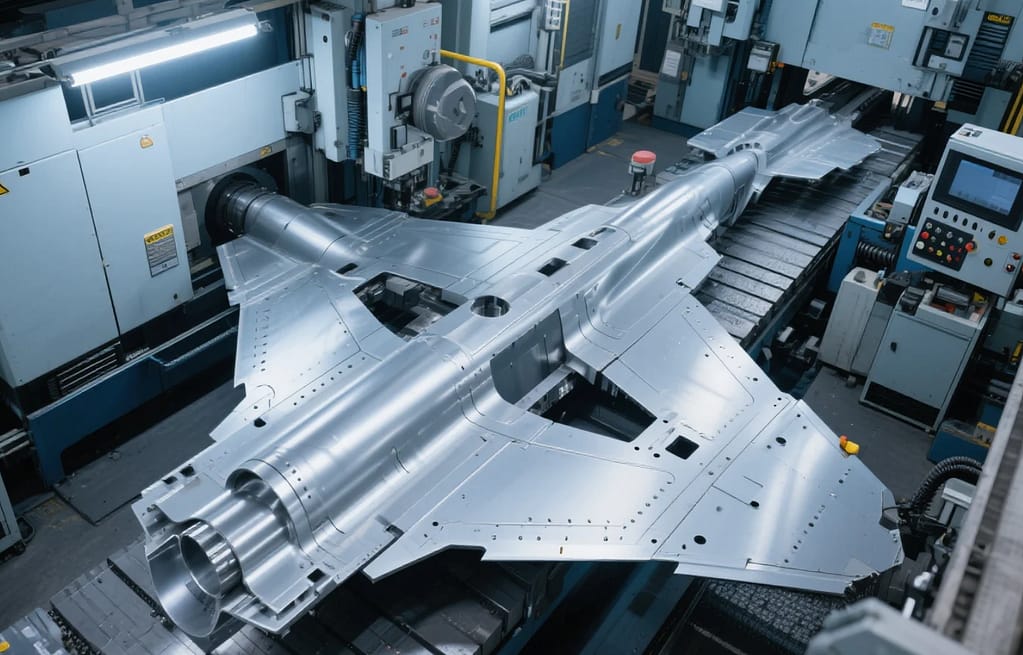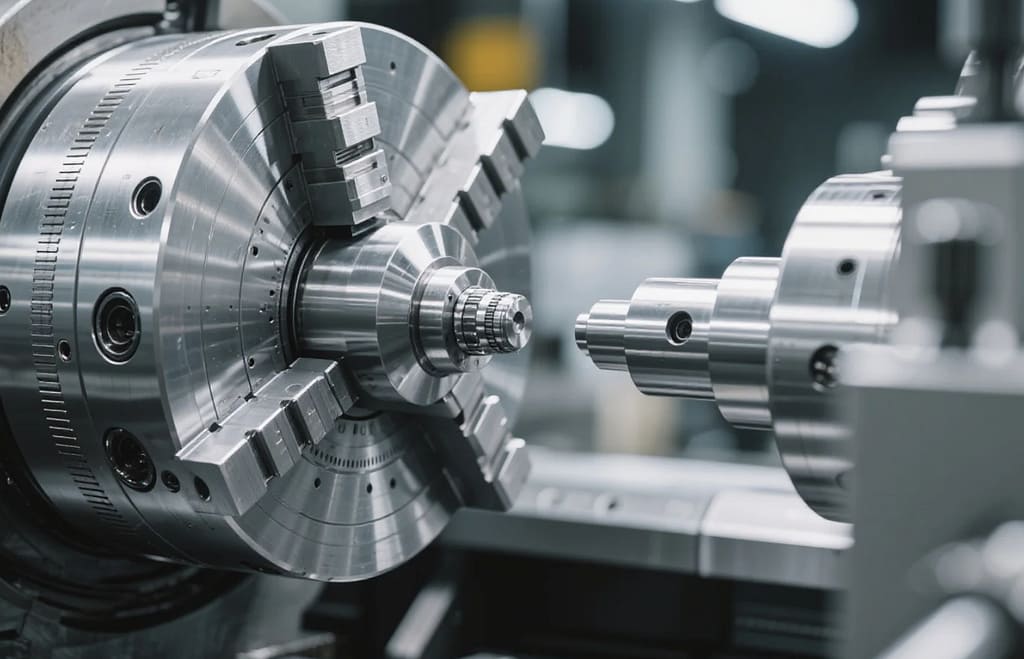The aerospace industry operates where the margin for error is effectively zero. Every component, from a tiny sensor housing to a major engine part, must perform flawlessly under the most extreme conditions imaginable—intense temperature swings, high pressure, and constant vibration. For this reason, the manufacturing discipline that underpins this sector is not merely “good enough,” but unwavering precision. This is the world of machining for aerospace, a specialized field that demands the utmost in technological capability, material expertise, and rigorous quality control.
For OEMs and tier-one suppliers in commercial aviation, defense, and space exploration, partnering with a precision manufacturing service provider capable of meeting these non-negotiable standards is crucial. This article explores the essential role of precision machining for aerospace applications, detailing the challenges, the specialized techniques, and the critical value provided to the end-user.
The Pillars of Precision: Why Machining for Aerospace is Unique

Machining for aerospace transcends standard manufacturing. It is a highly specialized craft defined by three core imperatives: extreme dimensional accuracy, the utilization of advanced materials, and stringent regulatory compliance.
Non-Negotiable Tight Tolerances and Surface Finish
The mechanical interplay between thousands of different components in an aircraft or spacecraft is entirely dependent on dimensional perfection. Aerospace components often require tolerances measured in single-digit microns (0.0001 inches or less), a level of accuracy that is difficult to achieve and even harder to maintain across high-volume production runs.
Consequently, high-precision machining, particularly through advanced Computer Numerical Control (CNC) milling and turning, becomes indispensable. Modern multi-axis CNC machines are utilized not only for their speed but, more importantly, for their repeatability. This technology ensures that every single component produced is an exact replica of the original design specification. Furthermore, surface finish quality is paramount. A smooth, controlled surface finish is not merely aesthetic; it is a critical factor in minimizing friction, reducing drag for aerodynamic efficiency, and preventing microscopic stress concentrations that could lead to fatigue failure under load.
Mastering Exotic and High-Performance Materials
One of the most defining challenges in machining for aerospace is the materials utilized. Modern aircraft and spacecraft components must possess high strength-to-weight ratios, exceptional resistance to heat, and superior corrosion resistance. This necessitates the use of exotic materials that are notoriously difficult to cut and shape.
Materials like titanium alloys (e.g., Ti-6Al-4V) are valued for their strength and lightness, but they are also tough and chemically reactive, demanding specialized tooling and precise control over cutting speeds to prevent work hardening. Similarly, nickel-based superalloys (like Inconel) are critical for jet engine hot sections due to their heat resistance but are abrasive and prone to rapid tool wear. Handling these high-value, difficult-to-machine materials demands a partner with deep metallurgical knowledge and investment in the latest cutting-edge tooling and thermal management techniques. By utilizing efficient material removal strategies, the high cost of these premium alloys is mitigated through reduced waste and optimized cycle times.
Advanced Machining for Aerospace Technologies and Applications

The complexity of contemporary aerospace design has pushed the boundaries of manufacturing technology. Simple 3-axis machining is rarely sufficient; instead, providers must leverage complex, high-precision techniques to realize intricate geometries.
Multi-Axis CNC Milling and Turning
Five-axis machining has become the industry standard for producing sophisticated aerospace components. This technology allows for the simultaneous movement of the cutting tool along multiple axes, enabling the creation of complex, contoured surfaces—such as turbine blades, impellers, or structural ribs—in a single setup. This capability significantly reduces setup time, minimizes fixture errors, and ensures that geometric features are perfectly aligned relative to one another.
For cylindrical parts, advanced mill-turn centers combine the capabilities of a CNC lathe and a milling machine. These machines can perform both turning and complex secondary milling operations, such as drilling and tapping, without removing the part from the machine. Consequently, improved part quality and enhanced throughput are realized, especially for crucial components like hydraulic valve bodies or landing gear actuators.
Applications Across the Spectrum
Precision machining is involved in virtually every system on an aircraft.
- Engine Components: Turbine disks, blades, combustor components—parts requiring exceptional heat and stress tolerance.
- Structural Components: Bulkheads, wing spars, and fittings where strength and lightweight construction are paramount.
- Avionics and Fluid Systems: Housings for sensors, precise fittings for hydraulic and pneumatic systems, and manifolds requiring leak-proof interfaces.
- Spaceflight Hardware: Components for satellite propulsion systems, complex camera housings, and structural elements designed to survive the vacuum and extreme temperature cycles of orbit.
The Unseen Value: Quality Assurance and Compliance

Em machining for aerospace, a finished part is only as valuable as the documentation that accompanies it. The value a precision manufacturer provides to an aerospace client extends beyond the physical component; it lies fundamentally in the assurance of quality and compliance.
Commitment to Rigorous Quality Systems
Aerospace clients demand strict adherence to internationally recognized quality management systems, most notably AS9100. Compliance with this standard means the manufacturing process is not only capable of achieving the specified tolerances but that this capability is systematically documented, audited, and repeatable over time. A robust quality system encompasses:
- Traceability: Full material and process traceability, ensuring that every batch of raw material and every step of the manufacturing process can be tracked and validated.
- In-Process Inspection: Use of advanced metrology equipment, such as Coordinate Measuring Machines (CMMs) and laser scanners, to verify critical dimensions during and after the machining cycle.
- Documentation: Comprehensive documentation packages, including Material Test Reports (MTRs), First Article Inspection (FAI) reports, and Certificates of Conformance (CoC), all of which are mandatory for flight-ready components.
A manufacturing partner that views quality not as a final checkpoint but as an integrated process is one that minimizes risk and accelerates the path from prototype to production.
Choosing Your Partner for Precision Machining for Aerospace
For procurement specialists and engineering managers, the choice of a manufacturing partner is a strategic decision that directly impacts component reliability and program timelines. When evaluating a potential partner for your mission-critical parts, the focus must be on capability, experience, and integrity.
A true expert in machining for aerospace offers more than machines; they offer collaborative engineering. They provide Design for Manufacturability (DFM) consultation, offering insights that optimize part design for cost-effective and repeatable production without compromising performance. Ultimately, the goal is a partnership built on mutual commitment to excellence, ensuring that every component manufactured is a testament to precision and reliability. Choosing a qualified partner is not just about fulfilling a requirement—it is about investing in the safety and success of future flight.
Frequently Asked Questions (FAQ)
Q1: What is the most critical factor in precision machining for aerospace?
The most critical factor is dimensional and geometric accuracy, often referred to as “tight tolerances.” Because aerospace components are part of life-critical systems, even minute deviations can compromise safety and system functionality. This is compounded by the need for consistency across small-to-medium volume batches of highly complex parts.
Q2: Why are exotic materials difficult to machine in the aerospace sector?
Exotic aerospace materials like titanium and nickel alloys are difficult to machine because they are very hard and resistant to heat, leading to rapid tool wear and the potential for work hardening in the material itself. Specialized multi-axis CNC equipment, advanced cutting tools, and precise coolant management are necessary to effectively cut these materials while maintaining the required tight tolerances and surface integrity.
Q3: What is the significance of AS9100 certification for a precision machine shop?
AS9100 is the international Quality Management System standard for the aviation, space, and defense industries. For a machine shop, this certification signifies a commitment to the highest quality standards, robust process control, comprehensive traceability, and a dedication to continuous improvement, all of which are essential for manufacturing flight-critical components.